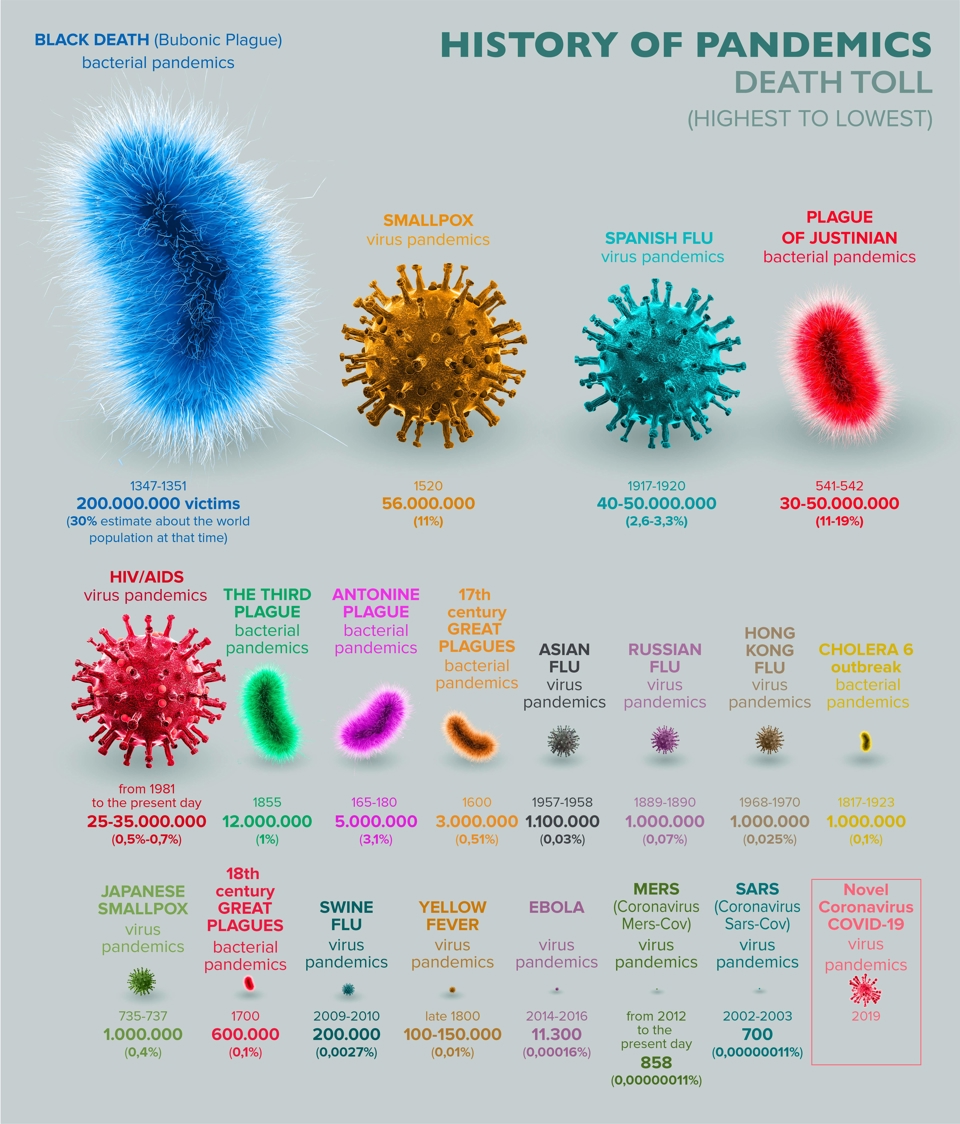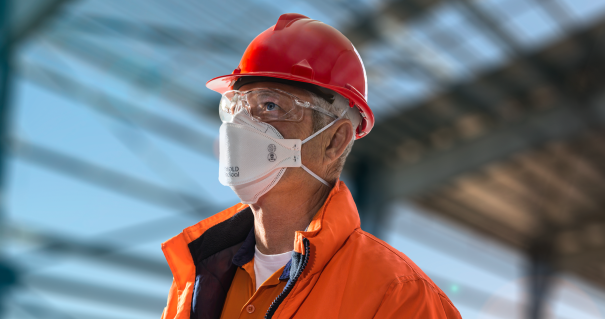During the COVID-19 pandemic, governments around the world mandated the use of face masks and respirators as a key part of their public health directives. But this wasn’t the first case of face masks being used as a protective measure during pandemics and outbreaks. In fact, the use of face masks as a form of protection dates back to the 17th century. That said, the face masks we know and use today have changed dramatically since the stuffed beak masks that were first used.
Let’s take a look at the history of face masks and how they’ve evolved over the years.
1300s-1900s: The bubonic plague
Face masks have been used in medical settings since at least the 17th century, dating back to the era of the bubonic plague, also known as the Black Death.
During this time, plague doctors wore beaked masks to protect themselves from contracting the disease. At the time, it was believed that the plague spread through miasmas, which are bad smells that wafted through the air. As a result, the beaks of these medical masks were filled with aromatic herbs, spices, flowers and garlic, which were thought to repel the foul odours believed to carry the plague.
However, face masks weren’t the only public health measures implemented by authorities in response to the plague. During this time, doctors completed medical checks on sick patients, isolated the infected, quarantined ships in ports and even restricted the movement of people and goods to try and prevent the spread of the plague.
1918-1919: The Spanish Influenza
By the time the Spanish Flu pandemic hit, face masks were already being used by doctors, surgeons and nurses as a form of protection when treating contagious patients. However, face masks were quickly introduced and enforced by governments around the world to combat the spread of the virus.
In America and Canada, masks were made mandatory for medical workers and police officers, and in certain cities, but they were widely unpopular among the public. Conversely, in Japan, the public fully embraced face masks during the pandemic. In fact, the Japanese continued to wear face masks after the outbreak to prevent the flu and protect against allergies.
By this point in time, face masks were made from several layers of cotton gauze secured by a metal frame. Some masks even featured an additional layer of non-porous material for extra protection. The masks were also reusable and could be sterilised in between wears.

1957 and 1968: Asia flu and Hong Kong flu
The 1957 Asian Flu originated in East Asia and spread globally, causing an estimated 1–2 million deaths. During this time, masks were primarily used by medical workers due to limited availability and a lack of mass production. However, these face masks were becoming more standardised in design, with a focus on filtering particles and maintaining sterility.
By the time the Hong Kong flu hit in 1968, the use of face masks had become more systematic in certain parts of the world, especially in hospitals and urban centres. In particular, surgical masks were more widely available and played a critical role in protecting healthcare workers.
2002-2004: SARS
Mask-wearing saw a resurgence in the early 21st century during the SARS outbreak. Originating in Guangdong, China, SARS spread to over two dozen countries, but it was considered relatively well-contained compared to other pandemics.
During the SARS outbreak, surgical masks became a common sight in affected regions, particularly in healthcare settings and among the public in East Asia. However, concerns arose about their limited ability to filter smaller airborne particles, leading to the need for more advanced protection.
In response, the N95 respirator gained prominence during the SARS pandemic. Its ability to filter out at least 95% of airborne particles, including those as small as 0.3 microns, made it ideal for protecting healthcare workers and individuals in high-risk environments.
The SARS outbreak cemented mask-wearing as a cultural norm in countries like China, Hong Kong, Taiwan and Japan. Masks were not only seen as a protective measure but also as a sign of solidarity and social responsibility.
2019-2022: COVID-19
At the end of 2019, the COVID-19 pandemic quickly spread across the world, prompting the global adoption of face masks as a form of protection. The World Health Organisation (WHO), along with government authorities and health departments, implemented mask mandates for the general population in response to the pandemic.
While face masks were quickly adopted across countries in Asia that were used to wearing masks, certain countries, like the United States, Canada and Australia, faced mask resistance.
Due to the sudden surge in demand, many countries also faced face mask and respirator shortages, meaning medical-grade masks and respirators were often reserved for medical and healthcare workers.
Ultimately, the COVID-19 pandemic highlighted the importance of masks and also reshaped societal attitudes, technology and policies surrounding their use.
Lessons from history and future implications
If anything, previous pandemics have taught us that face masks are a simple and effective form of protection against the transmission of diseases and viruses. While face masks are essential within medical and healthcare settings, it’s likely that they’ll continue to remain a common preventive measure in crowded or high-risk environments, especially during flu seasons or localised outbreaks.

However, the COVID pandemic has also emphasised the importance of international cooperation in manufacturing and distributing masks and other PPE to strengthen global supply chains and stockpiles.
As a result of the mask shortages that impacted Australia during the pandemic, we’re now home to the Southern Hemisphere’s largest manufacturer of high-quality respirators and face masks, Detmold Medical. Since the pandemic, Detmold Medical has grown to become the supplier of choice for some of Australia’s largest government healthcare departments, hospital groups and distributors. Shop our range of quality face masks and respirators today.




